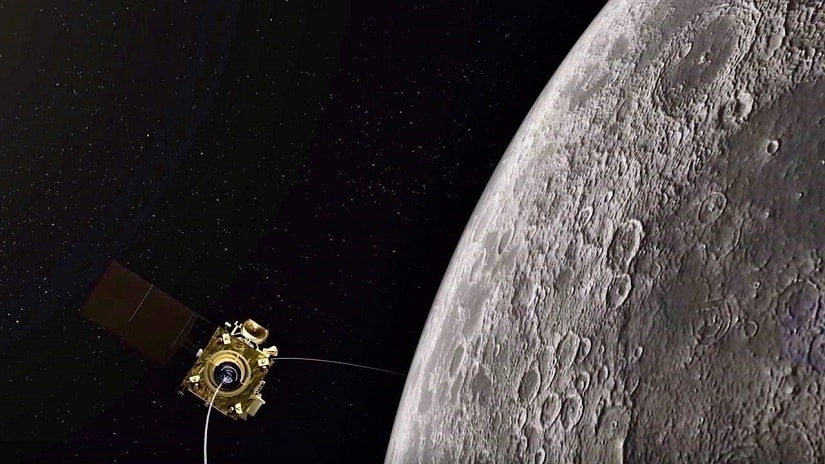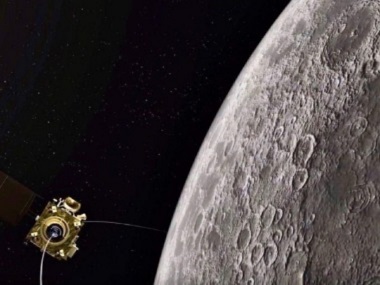Joining the Dots is a weekly column by author and journalist Samrat in which he connects events to ideas, often through analysis, but occasionally through satire *** On Monday, India sent into space its second moon mission, Chandrayaan 2 , which consists of a lunar orbiter, a lander, and a rover that is meant to explore the moon’s South Pole. A three-stage rocket carried it into space. The journey of 384,000 km to the moon will be completed in seven weeks. On 7 September, Chandrayaan’s lander is expected to touch down on the moon and send out the rover. Read on Firstpost: Chandrayaan 2 — A step-by-step look at the 47-day journey It is a marvellous feat of science and technology. India is among very few countries in the world to have mastered it. The capabilities of India and Indians in science and technology are now recognised everywhere. There is a vast pool of trained engineers and science graduates, some of whom go on to careers in institutions like the Indian Space Research Organisation and in the global companies like Google, Microsoft, Intel, and Amazon, among others, that are shaping the world we all live in. This is a very long way from where the country was in, say, 1900. That was a country of bullock carts. The world as a whole was in a different era. The motor car had barely been invented. The aeroplane was still to come; the Wright Brothers would make their first flight over a distance of 852 feet three years later. There was no television, computer, or mobile phone, and certainly no internet. The camera existed but as a major contraption, not a little dot at the back of a phone. Talkies, meaning cinema with sound, were still a long way in the future. [caption id=“attachment_7044301” align=“alignnone” width=“825”]  Chandrayaan 2 represents a marvellous feat of science and technology. Image courtesy ISRO[/caption] Indian society then was one where formal education was seen as unnecessary by a vast section of the population. Less than 10 percent of the population over 10 years old was literate, according to data from a UNESCO report titled “Progress of Literacy in Various Countries” that looks at the period from 1900-1941. The notion that people of all castes, and women too, might want to study, and to work in jobs alongside one another, was especially futuristic. That a country of so many hundreds of millions has changed so much in so little time is a testament to the efforts of visionaries and progressives who sparked off the change — people like Ishwar Chandra Vidyasagar, Raja Rammohun Roy, Keshub Chandra Sen, Swami Dayanand Saraswati, Mahadev Ranade, Jyotiba Phule and Babasaheb Ambedkar among others. Some credit is also due to the British colonisers, who forced change on Indian society, through their support of causes such as the end of Sati and the spread of modern education. Those people were the liberals of their times. The conservatives and obscurantists then, as now, were those who considered everything about their own societies great and glorious, including practices such as Sati, child marriage, and the general oppression of women and lower castes (to justify all of which some suitable reason could always be found in tradition or scripture). In this, the Indian conservatives and obscurantists were not unique. They were just like their brethren everywhere else. “Throughout the last 400 years, during which the growth of science has gradually shown men how to acquire knowledge of the ways of nature and mastery over natural forces, the clergy have fought a losing battle against science, in astronomy and geology, in anatomy and physiology, in biology and psychology and sociology. Ousted from one position, they have taken up another. After being worsted in astronomy, they did their best to prevent the rise of geology; they fought against Darwin in biology, and at present they fight against scientific theories of psychology and education. At each stage, they try to make the public forget their earlier obscurantism, in order that their present obscurantism may not be recognised for what it is,” the philosopher Bertrand Russell wrote in an essay titled “An Outline of Intellectual Rubbish”, published in 1943.
Whatever progress has been achieved in science, technology and society is in spite of the conservatives and obscurantists around the world, not because of them.
Nonetheless, they remain a powerful force around the world, and are enjoying something of a fresh wave of success globally at present. The fight against Darwin, for instance, has been renewed in various countries, including India, and even astronomy’s victory over astrology is far from certain, despite moon missions. Astonishing statements by leaders are now quite common. Two days before Chandrayaan took off for space, Ajay Bhatt, a BJP Member of Parliament from Uttarakhand, announced that rubbing stones taken from the Garud Ganga river, putting it in water, and drinking it, would prevent Caesarean deliveries. The stones from the river also apparently have the magical ability to frighten away snakes by their mere presence. A day earlier, also in Parliament, India’s former minister of higher education and former Mumbai Police commissioner, Dr Satyapal Singh, reiterated his earlier stand that Charles Darwin’s theory of evolution was wrong. Singh’s original reason for doubting Darwin was that nobody had seen a monkey turn into a man. The statements by Bhatt and Singh are only the latest in a long list of such statements by illustrious members of Indian society. We’ve heard, from a judge of the Rajasthan High Court, Justice MC Sharma, that the tears of a peacock impregnate peahens . Mr Sharma had also recommended life imprisonment for anyone who kills a cow, as 330 million gods and goddesses reside inside each cow, and had stated that cow urine could prevent ageing. Across at the other end of the country, Tripura’s young chief minister, Biplab Kumar Deb of the BJP, had noted that the internet existed during the days of the Mahabharata war, some 5000 years ago. None of these people is illiterate or unintelligent. They are successful and powerful members of society. Their beliefs are not the beliefs of fringe loons; they are beliefs that flow from a certain mainstream tradition and worldview.
Belief is a strange thing. It can turn reason and logic to its own purposes.
An education in science, or even rocket science, is no defence against irrational beliefs. Perhaps that explains why ISRO scientists seemingly took care to ensure that the countdown for Chandrayaan’s moon mission launch did not commence during “Rahu Kaalam”, a slot of inauspicious time ruled by a non-existent planet. Should the mission fail, the fault now will not be Rahu’s…or theirs. After all, their political bosses are not likely to understand rocket science, but they do understand the meaning of Rahu Kaalam. Samrat is an author, journalist and former newspaper editor. He tweets as @mrsamratx


)

)
)
)
)
)
)
)
)



